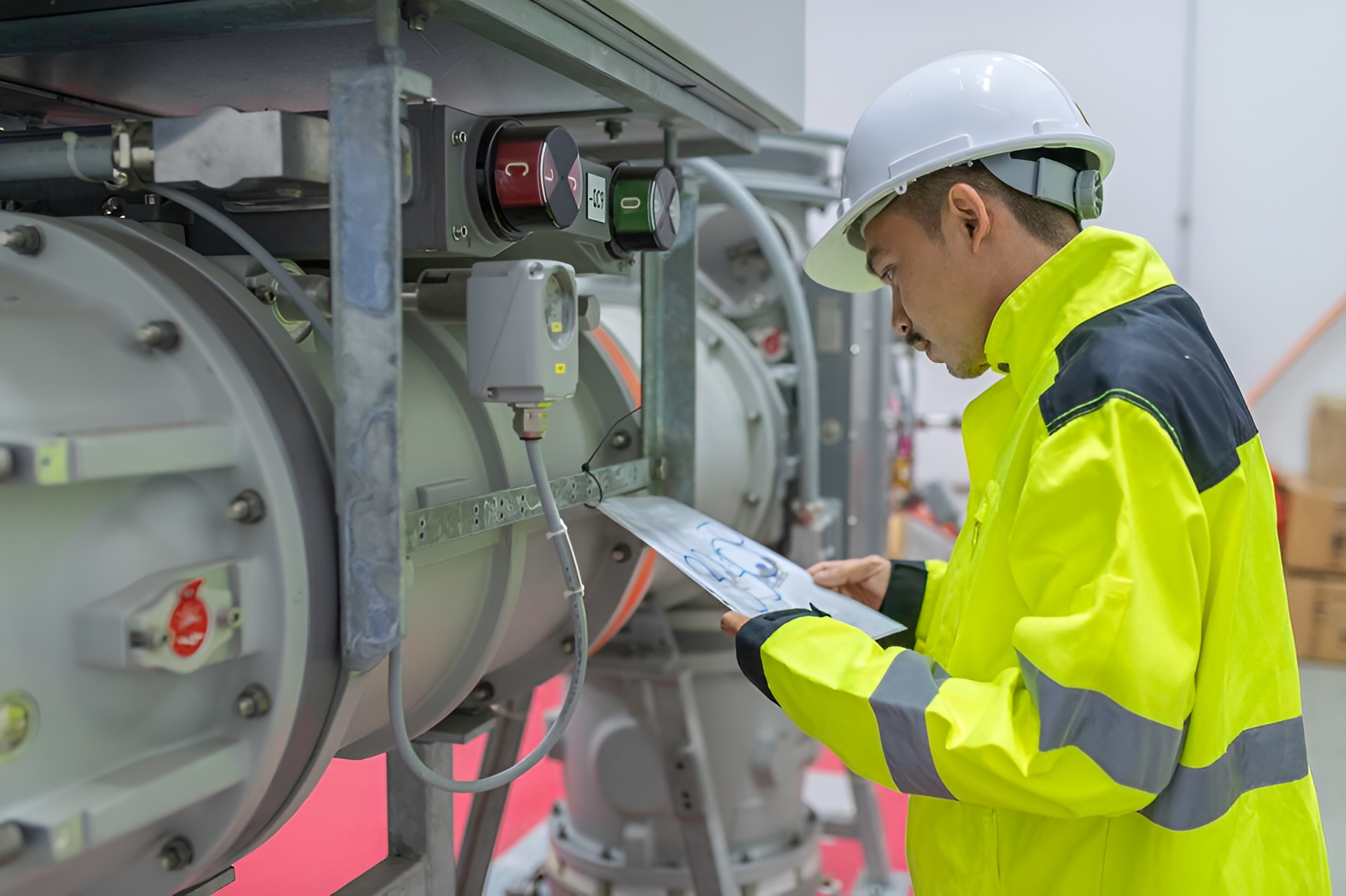What are the Top 5 Challenges in Gas Atmosphere Testing and How Can Training Help?

Gas atmosphere testing is vital for a range of industries, ensuring that environments are safe and in accordance with necessary standards. However, this essential process isn’t without its set of challenges. In this article, we’ll delve into the top five hurdles faced in gas atmosphere testing and the invaluable role that training can play in overcoming them.
1. Ensuring Accuracy and Precision in Measurements
Precision in measurements isn’t just about getting numbers right; it’s about ensuring safety, quality, and compliance. But how do we ensure that these measurements are accurate every single time?
Factors Affecting Accuracy
- Equipment Calibration: If your tools aren’t correctly calibrated, you can’t expect accurate results. Regular maintenance and checks are pivotal.
- Human Error: Even the best of us make mistakes. Fatigue, distractions, or a simple oversight can lead to miscalculations.
- Environmental Conditions: Conditions such as temperature and humidity can influence readings. Being aware of these factors is essential.
2. Adhering to Standards and Regulations
Standards and regulations guide the process, ensuring that the testing is consistent, reliable, and safe. But keeping on top of these guidelines can be daunting.
Importance of Understanding Standards
- These benchmarks ensure consistency in testing results across the board.
- They give industries a structure to follow, promoting safety and reliability.
- Non-compliance can lead to penalties, which can be detrimental for businesses.
3. Safety Concerns in Hazardous Environments
Working in potentially dangerous settings is part and parcel of gas atmosphere testing. The hazards are real, and ensuring safety is paramount.
The Reality of Safety Concerns
- Explosions and gas leaks are just a couple of examples of what can go wrong without proper precautions.
- The right safety gear and thorough protocols can make all the difference between a regular day at work and a disaster.
4. Interpreting Complex Data and Reporting
Numbers are just the beginning. Interpreting this data to make meaningful decisions is where the real challenge lies.
From Numbers to Meaningful Insights
- Data is worthless if it isn’t understood. Breaking down complex datasets into understandable chunks is crucial.
- Communication plays a significant role. Clear and concise reports can aid in decision-making processes.
5. Keeping Up with Technological Advancements
The world of gas testing isn’t static. New equipment, methodologies, and processes are continually evolving, making it a task to stay updated.
Embracing New Tech: Challenges and Benefits
- With new technology comes the need for new training. Not everyone will be tech-savvy or adaptable to change.
- However, embracing these advancements can lead to more efficient and accurate testing.
How Training Can Be the Solution
Enhanced Accuracy Through Training
Hands-on sessions can offer professionals a chance to practice and hone their skills, reducing the chances of errors in the field.
Understanding Standards and Safety Protocols
Focused workshops can break down complex regulations, making them easier to digest and apply. Safety drills can also instil a sense of discipline and readiness.
Modules for Data Interpretation and Reporting
Training can introduce tools that simplify complex data, making reporting a breeze. Clear communication techniques can also be taught, aiding in the presentation of findings.
Staying Updated: Training on the Latest Tech
Continuous learning ensures professionals are not left behind in this ever-evolving field. Understanding and applying the latest methodologies can revolutionise the testing process.
Conclusion
In a rapidly changing world, staying ahead in gas atmosphere testing is no easy feat. From ensuring accuracy in measurements to keeping up with technological advancements, challenges are aplenty. However, with the right training, these challenges can be tackled head-on, leading to safer, more efficient testing. For those seeking top-tier training solutions, Vertical Horizonz, a leading training institute in Brendale, offers a range of courses tailored to meet the needs of today’s professionals. With expert trainers and a focus on hands-on learning, you’ll be well-equipped to face and overcome the challenges of gas atmosphere testing.
1. What is gas test atmospheres training?
Gas test atmospheres training is a specialised program designed to educate individuals on how to detect and measure the concentration of various gases within an environment, particularly in confined spaces. This training ensures that workers can identify potentially hazardous gas levels, ensuring both their safety and the safety of others. Participants learn about various gas detection instruments, calibration processes, and interpreting results accurately.
2. How long does gas test atmospheres last?
The duration of the gas test atmospheres course is half a day, commonly referred to as a ½ Day course.
3. What are the 4 gases in confined space?
When discussing confined spaces, there are four primary gases that are of concern, often referred to as the “big four”. These are:
- Oxygen (O2): Monitoring oxygen levels is crucial as both low (below 19.5%) and high levels (above 23.5%) can be dangerous. Low levels can lead to asphyxiation, while high levels increase the risk of fires or explosions.
- Carbon Monoxide (CO): A colorless, odorless gas produced by incomplete combustion. It can interfere with the blood’s ability to carry oxygen, leading to poisoning.
- Hydrogen Sulfide (H2S): Often referred to by its distinct rotten egg smell, it is a toxic gas produced in places like sewers and manholes. Inhalation can be harmful and potentially fatal in high concentrations.
- Methane (CH4): While it’s odorless and non-toxic, methane is flammable. Its presence in high concentrations can create explosive environments.
4. What are the limits for atmospheric testing?
Atmospheric testing limits, often termed as Threshold Limit Values (TLVs) or Permissible Exposure Limits (PELs), are set to ensure the safety of individuals working in specific environments. The exact limits can vary based on regional regulations and standards. However, general limits include:
- Oxygen: Acceptable levels usually range between 19.5% to 23.5%.
- Carbon Monoxide: Commonly, exposure should not exceed 25 parts per million (ppm) over an 8-hour work period.
- Hydrogen Sulfide: Short-term exposure limits are often set at 15 ppm, while the permissible 8-hour exposure is usually around 10 ppm.
- Methane: Although non-toxic, its lower explosive limit (LEL) is about 5%, meaning that concentrations above this can be hazardous as they are within the explosive range.
It’s essential to check specific regional or national guidelines and standards to ensure accurate and up-to-date information on these limits.
-
6 Career Advancements Enabled by Completing a White Card Training Course
November 06, 2023
-
7 Career Opportunities Unlocked by a Working at Heights Certification
October 24, 2023
-
7 High-Paying Jobs You Can Get with a GWO Training Certification
October 20, 2023
-
Top 7 Career Advancements After Completing a High Pressure Water Jetting Course
October 18, 2023
-
5 Essential Techniques Taught in High Pressure Water Jetting Courses
October 18, 2023
-
7 Career Opportunities after Completing Vacuum Loading Training
October 17, 2023







